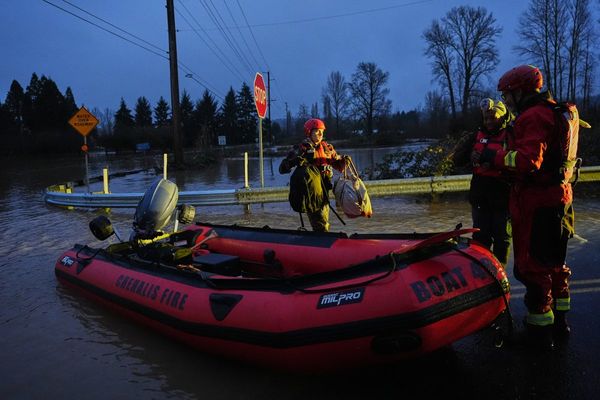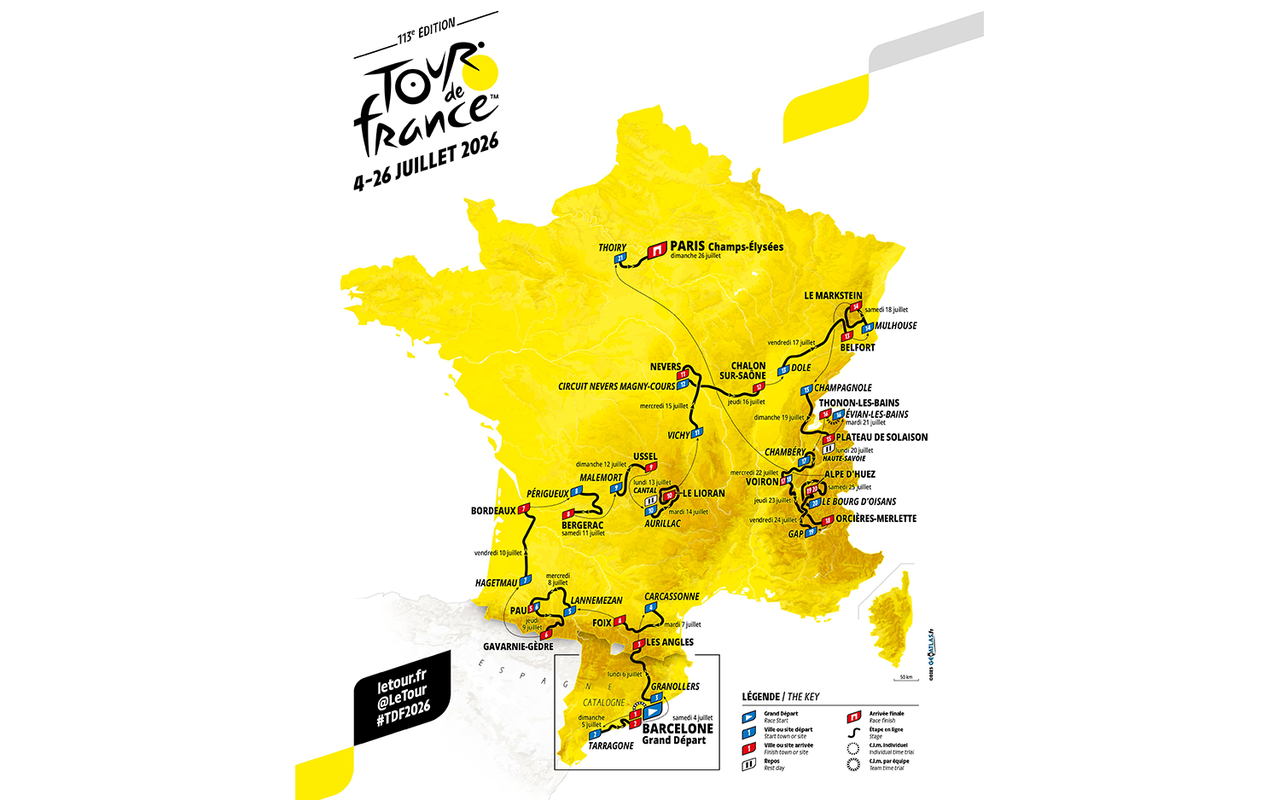
Tadej Pogačar's expected bid to win the Tour de France for a record-equalling fifth time next July will be shaped by the double ascent of Alpe d'Huez on back-to-back stages in the final weekend, a difficult first week visit to the Pyrenees and the race's first opening team time trial since 1971.
Also on the menu of the 2026 Tour de France will be a return to the Vosges mountains in the east of the country, the unprecedented ascent of Plateau de Solaison on stage 15 and – just as in 2024 – another final stage across the Montmartre climb in Paris.
Jonas Vingegaard will also be pleased to see a week 2 repeat of the 2024 stage finish in Le Lioran in the Massif Central, the scene of Pogačar's one defeat by the Dane in the Tour – or indeed in any race – since 2023. The summit finishes in Gavarnie-Gedre in the Pyrenees and Orcières-Merlette in the Alps, scene of Luis Ocaña's legendary defeat of Eddy Merckx in the 1971 Tour, and an individual time trial on stage 16, will also be high points of the 2026 Tour.
However, it's the double ascent of the Alpe d'Huez on stages 19 and 20 for the first time since 1979 that form the most striking feature of next year's race.
Tackled first with a short, punchy stage from Gap on the Friday via its traditional 21 hairpin-ascent, the Saturday a much shorter-than-usual version of the Alpe d'Huez ascent will be preceded by the daunting and difficult Croix de Fer and Galibier and the little-known Col de Sarenne - a combination that all but ensures the Alpe will play a pivotal role over two days in the outcome of the 2026 Tour.
Challenges from the word go
However, a full three weeks before reaching the double Alpe d'Huez whammy, the GC contenders face their first major challenge - the opening team time trial in Barcelona, just 19.1 kilometres long but with two short but punchy ascents in Montjuic Park to finish off. Times will be taken on the first rider to cross the line, putting the overall favourites instantly in the spotlight, after which a second difficult stage along the Barcelona coast will surely keep the contenders on their toes.
The GC obstacles will come thick and fast, though, on a route where the first week will be notably tougher than in 2025, given the Tour hits the Pyrenees as soon as stage 3 - much earlier than usual. The opening mountain stage and summit finish at Les Angles will mark the Tour's return to France, too, on a day with nearly 4,000 metres of climbing.
Just four kilometres long, that final ascent of Les Angles stands in marked contrast to the Tour's next major mountain day - stage 6's final climb of Gavarnie-Gèdre. A 'mere' 20 kilometres long, albeit with not too tough a gradient, Gavarnie-Gèdre will be immediately preceded by such dauntingly familiar Pyrenean monsters as the Aspin and the Tourmalet. All in all with such a difficult start, just like when the Tour visited the Pyrenees in the first week back in 2023 after its start in Bilbao, the favourites will have no choice but to hit the ground running.
Three days later, a very tricky ride across the Massif Central, with plenty of opportunities for ambushes that include the ultra-hard mid-stage Suc au May climb, will bring the 2025 Tour de France to its first rest day. July 14 is an even harder version of the same kind of climbing, with a high-risk series of challenges featuring the Puy Mary Pas de Peyrol, Col de Pertus and the Lioran - exactly the same finish where Vingegaard briefly managed to first catch Pogačar and then outsprint him back in 2024.
After two flat stages taking the race north and east, Friday 13 July sees a return to the Vosges for the first time since the 2023 Tour, tackling the mountain range's most emblematic limb, the Ballon d'Alsace at the end of the 2025 Tour's only stage over 200 kilometres. The most difficult day in the Vosges, by far, though, is stage 14, where the peloton grinds their way up the former forest track of the Col du Haag, a very irregular 11-kilometre ascent with gradients of up to 15%, that then brings them up to the 2023 finish at Le Markstein Fellering. There's no return to the Vosges's most notoriously steep ascent of Planche des Belle Filles of 2020, then, but even so this is one of the toughest days of the entire 2025 Tour.
The climbing challenges come thick and fast for the Tour's overall contenders from hereon, too, with the second week's last stage featuring the ultra-hard finish at Plateau de Solaison (11.3 kilometres at 9.2%). Already used in the Critèrium du Dauphiné, the northern Alpine climb concludes a day of nearly 4,000 metres of climbing, preceded as it is by the very difficult if short Montée de Salève and the non-classified Côte de Arbusigny.
Remco Evenepoel (Soudal-QuickStep) will surely have paid extra close attention when Christian Prudhomme provided details of the race's only individual time trial on stage 16. A medium-length 26-kilometre effort that opens up the crucial third week, the hilly course between Évian-les-Bains and Thonon-les-Bains will be his best chance to impact in his favoured terrain on the Vingegaard-Pogačar hegemony. After a brief return to the flat on stage 17 - the last of the 2026 Tour - stage 18 will begin a triple whammy of summit finishes. And, albeit in as legendary a mountain-top finish as Orcières-Merlette, that ascent is positively benign in comparison with what's to come.
Friday's first ascent of two of the Alpe d'Huez comes after a short, punchy stage, just 128 kilometres long and takes the race up the usual, dauntingly difficult 21-hairpin climb. But for the first time since 1979, the race will then return to the same mythical ascent in 24 hours, but this time with a new approach, via the Col de Sarenne. This will make for a very different approach to the Alpe, albeit preceded by much more familiar mountains like the Croix de Fer, Telegraphe, and Col du Galibier, totalling nearly 5,600 metres of climbing.
Combine the two, particularly with an unclassified 3.7 kilometre rise to the final mountain finish line on Alpe d'Huez on the second last day, and it makes for a fearsomely difficult conclusion to a course where the opening difficulties of the first week already mean the riders will have to had to hit the ground running.
If the new approach to the Alpe d'Huez via the Sarenne on stage 20 constitutes one major twist to a familiar scenario, then the same goes for Sunday's finish on Paris' Champs Elysées. Preceded by the trio of ascents of the Montmartre climb. The rain-soaked finale on the climb’s debut was considered a resounding success in 2025, and this time around, the organisers are hoping for a similarly spectacular conclusion, albeit one which once again will see the race's sprinters deprived of their previously traditional chance to shine in 'the most beautiful boulevard in the world'.
Whether Tadej Pogačar (UAE Team Emirates-XRG) is once again in yellow, and equaling that all-time record of five Tours de France in the process, we'll only know for sure on the evening of July 2026. But with five summit finishes - six if you include the second ascent to Alpe d'Huez - and challenges in all five of France's main mountain ranges, nobody will be able to say that the Slovenian star will have an easy pathway towards one of sport's biggest all-time challenges.
Tour de France 2026 – Stage by stage guide
Stage 1
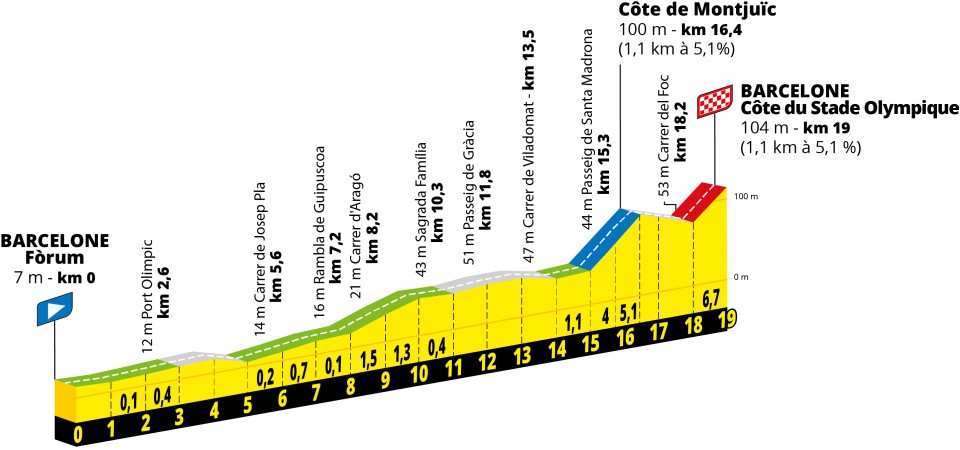
The third-ever start in Spain after San Sebastián in 1992 and Bilbao in 2023 will also see the first team time trial as a Grand Départ stage since the 1971 Tour de France. Finishing with two ascents in Montjuic Park, one of Barcelona's most hallowed stomping grounds for cycling where the Volta a Catalunya finishes each year, this is also the Tour's first team time trial since 2019.
Stage 3
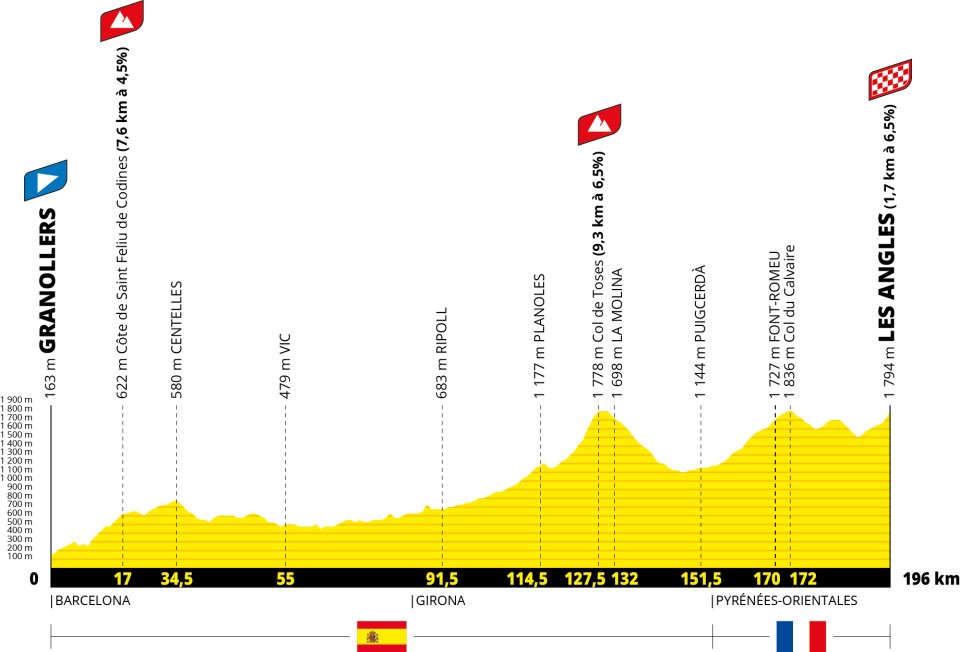
The first full mountain summit finish of the 2026 Tour de France, taking the race back into home soil, this could well be the third GC stage in as many days. Whoever is in the lead after 4,000 metres of vertical climbing will likely be there to stay at least until the second big Pyrenean stage three days later.
Stage 4
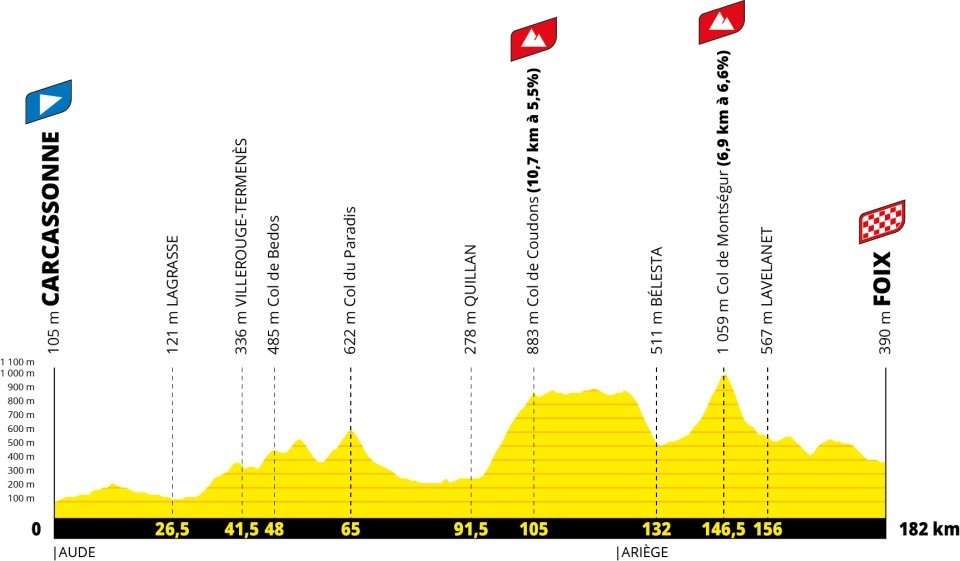
Foix traditionally acts as a scenario for breakaways and this rugged but not excessively difficult stage will likely see the GC favourites take a back seat once again. The last winner in Foix was Canada's Hugo Houle back in 2022 at the end of a 40 km breakaway.
Stage 9
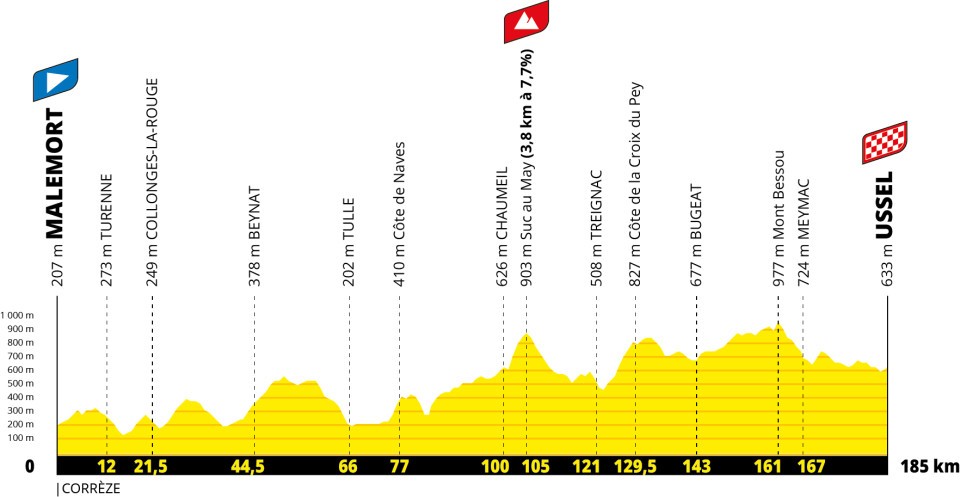
Another stage with breakaway written all over it: too hard for the sprinters, on the eve of the race's first rest day. 3,800 metres of climbing but the crunch moment will likely come on the mid-stage Suc Au Mary.
Stage 10
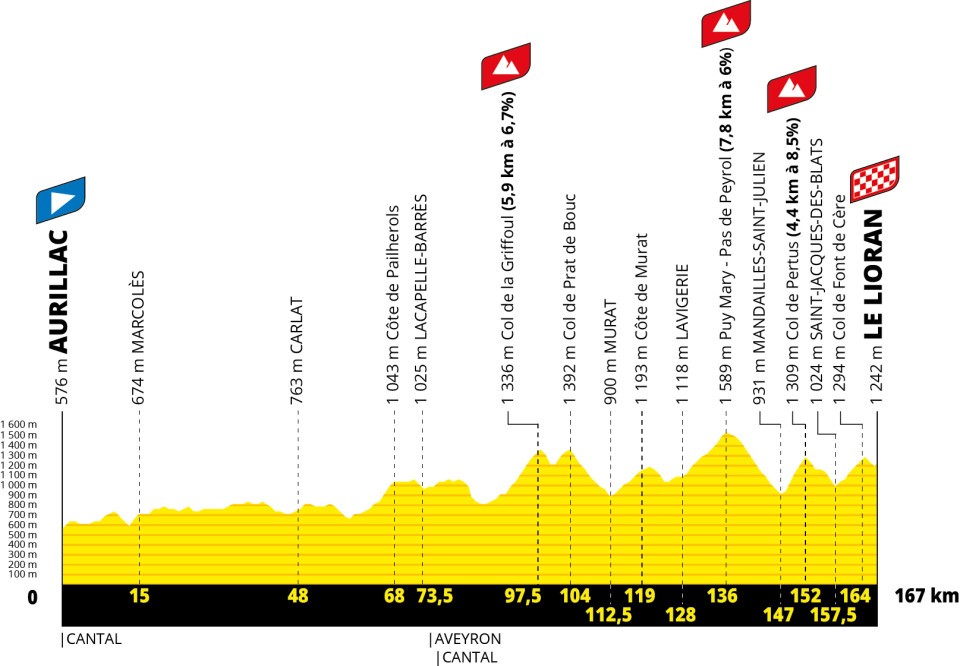
The twisting, tecnnical and little-known roads of the Massif Central rarely disappoints, and in 2024 the same finish of Le Lioran saw Jonas Vingegaard inflict his most recent direct defeat of Tadej Pogačar - and spark acres of speculation about whether he could then beat the Slovenian overall. That didn't happen, of course, but this time round, the options for ambushes and surprises remain as plentiful as ever.
Stage 14
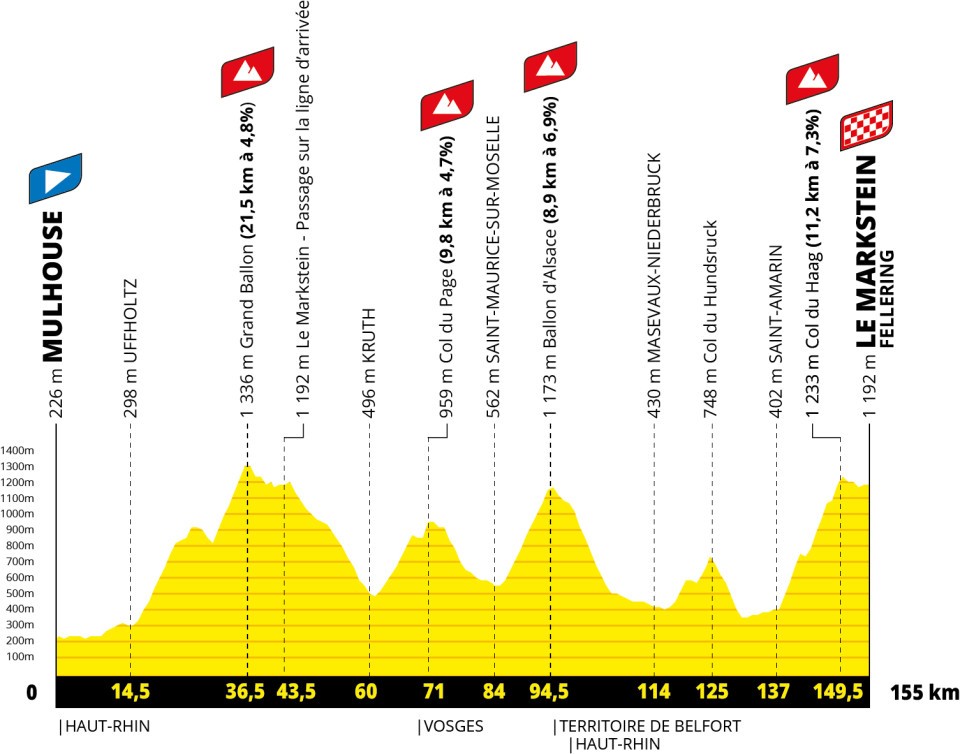
Not for the fainthearted, this is exactly the same finish where Tadej Pogačar claimed a final stage in the 2023 Tour de France and Thibaut Pinot bade farewell to his fans on home roads - but by then the overall was done and dusted in Vingegaard's favour.
This time round, the 2025 Tour's second day in the Vosges is more likely to open up the GC battle's final rounds in earnest. The Ballon d'Alsace (already tackled the previous day) and Grand Ballon were already tackled in the 2023 route, but the addition of the final climb of the Col du Haag - a tarmacked-over forest trail reputedly much harder than the Platzerwasel used as an equivalent last challenge three years ago - will combine to make this one of the toughest days of the entire race.
Stage 16
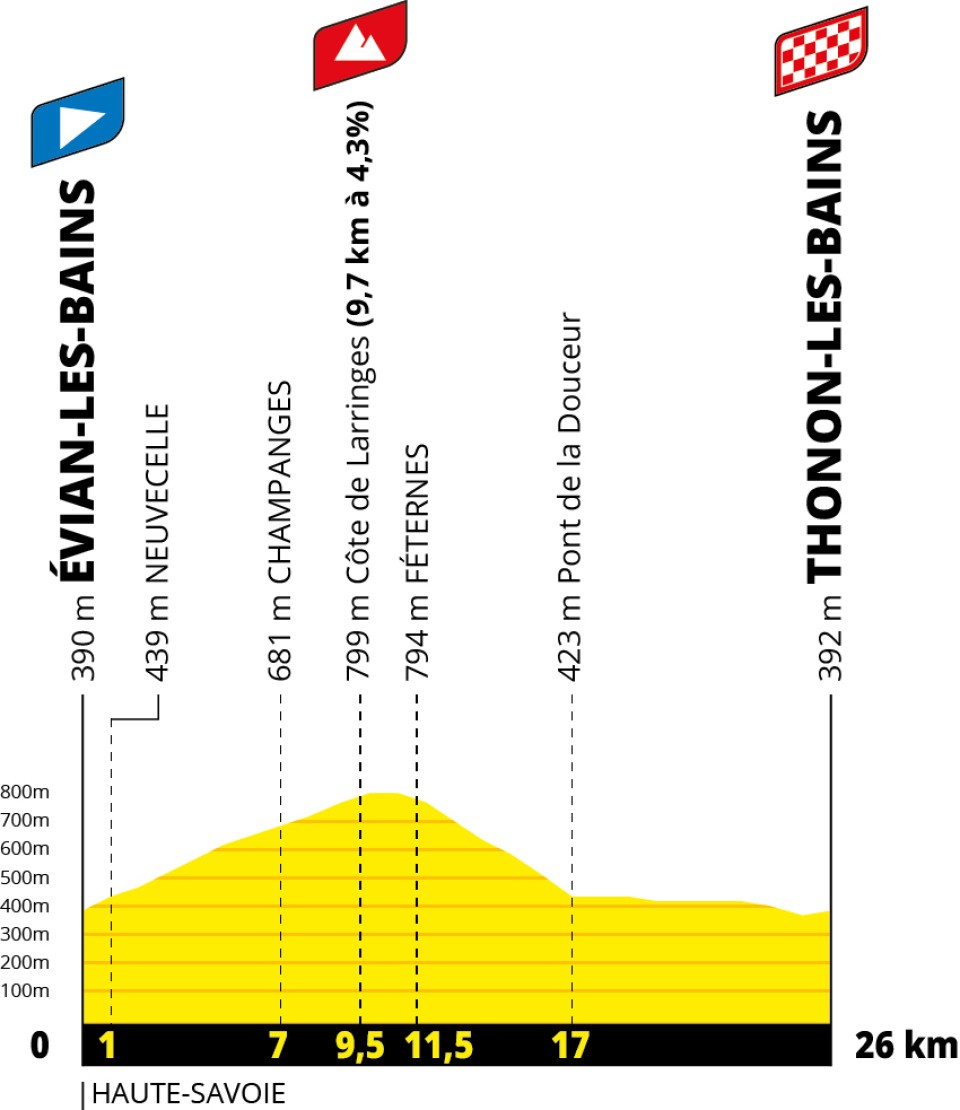
The 2026 Tour's only time trial and an opportunity for the specialists to regain ground on the climbers after the weekend of mountain racing. However, being a third uphill, a third downhill and a third flat, it's perhaps more one for Vingegaard than it is for Evenepoel. The other interest point is that it comes straight after the final rest day, a break to the daily race rhythm something which can affect riders badly.
Stage 18
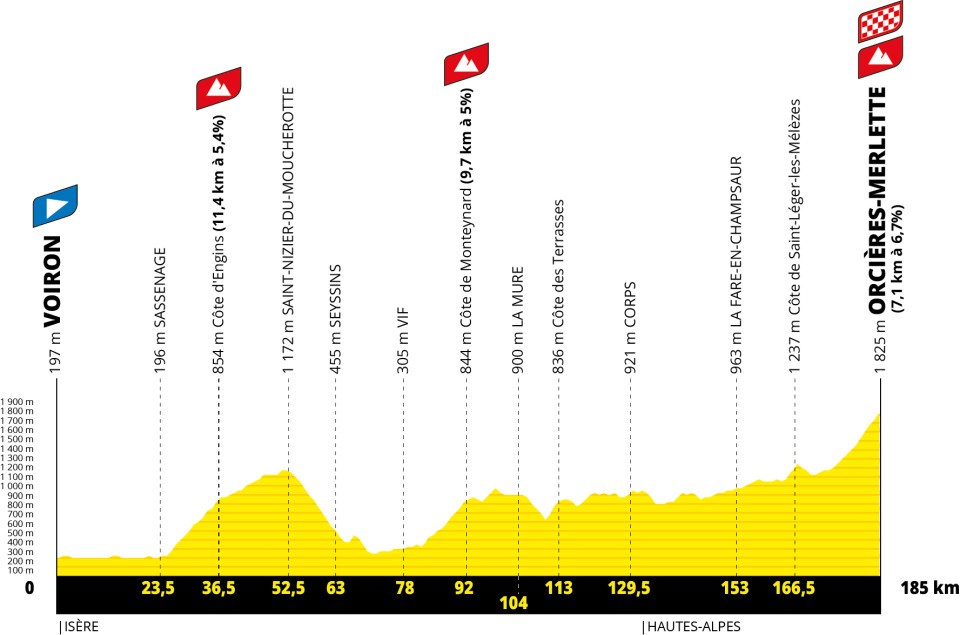
Scene of a small group sprint win by Primoz Roglič when the Tour last visited this ski station in 2020, Orcières-Merlette is a finish forever associated with Eddy Merckx and Luis Ocaña. This was where Ocaña, a hugely gifted time triallist, used the steady grind of the final climb and the plains beforehand to inflict the worst stage racing defeat suffered by Merckx in his career during the 1971 Tour de France. Merckx lost nearly eight minutes that day, and the gaps will be smaller for sure this time round. But as an appetizer for the final two Alpine stages, it can't be matched.
Stage 19
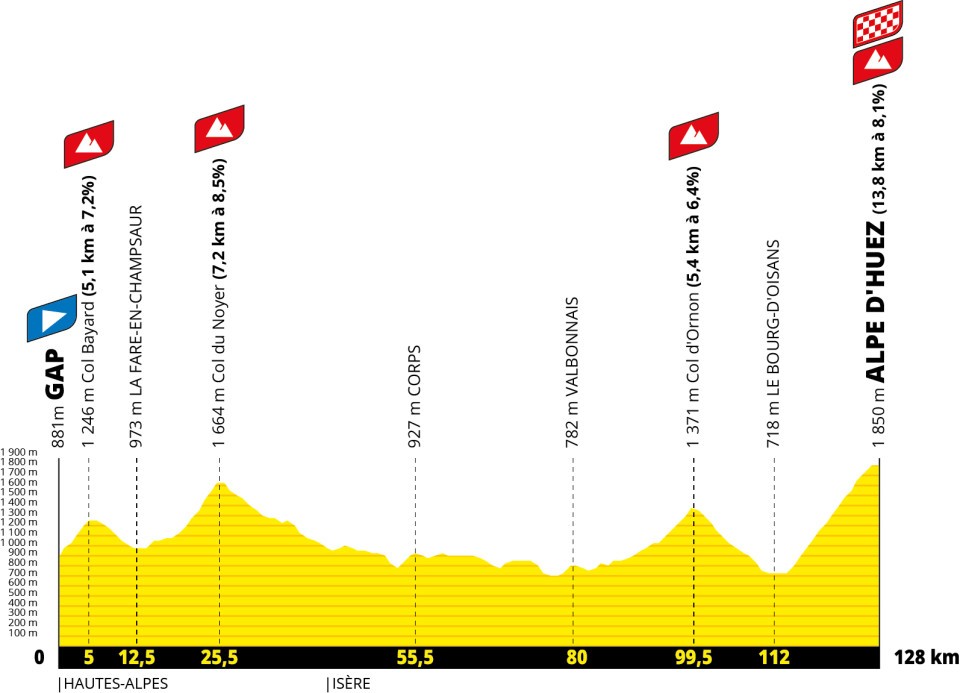
A 'true challenge for the ambitious' is how Christian Prudhomme described this stage and the shortness of the build-up to one of cycling's most mythical ascents will likely encourage some long-distance moves. For the GC favourites, the dilemma between either playing it conservative to save their strength or going all-out to claim as much time as possible prior to Saturday's showdown is going to be a tough one to resolve.
Stage 20
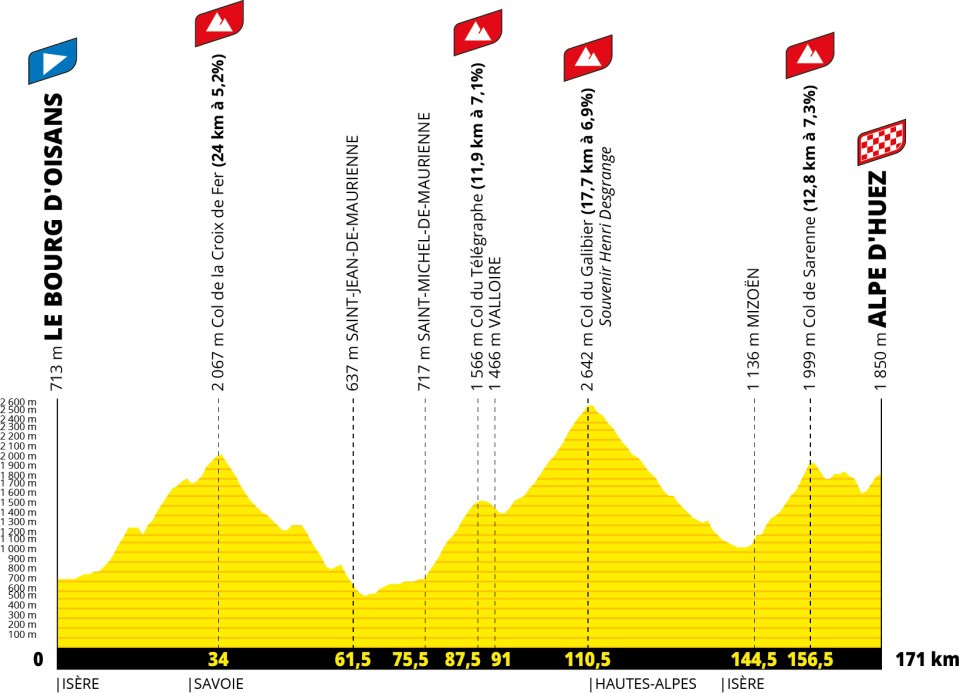
In a word, yikes. A massively dramatic finale to the Tour's climbing stages, with the added motivation for those still with any energy to try to become cycling's first double winner on Alpe d'Huez since 1979 in the same edition of the race. However, the inclusion of ascents as hallowed as the Galibier and Croix de Fer only underline how tough this day will be, particularly given the added challenge of the Sarenne.
The pitfalls of the Montmartre stage on Sunday notwithstanding, that old cliché about whoever's in yellow in Alpe d'Huez will be in yellow on the Champs Elysées may not have been true after stage 19. But it will be after stage 20. So as the definitive conclusion to the 2025 Tour's mountains, if not (quite) the race, this stage really can't be faulted.

